 Mark Sinker
Mark Sinker
Robots, aliens, space shuttles, and a dash of Afrofuturism: a new exhibition at the Science Museum in London.
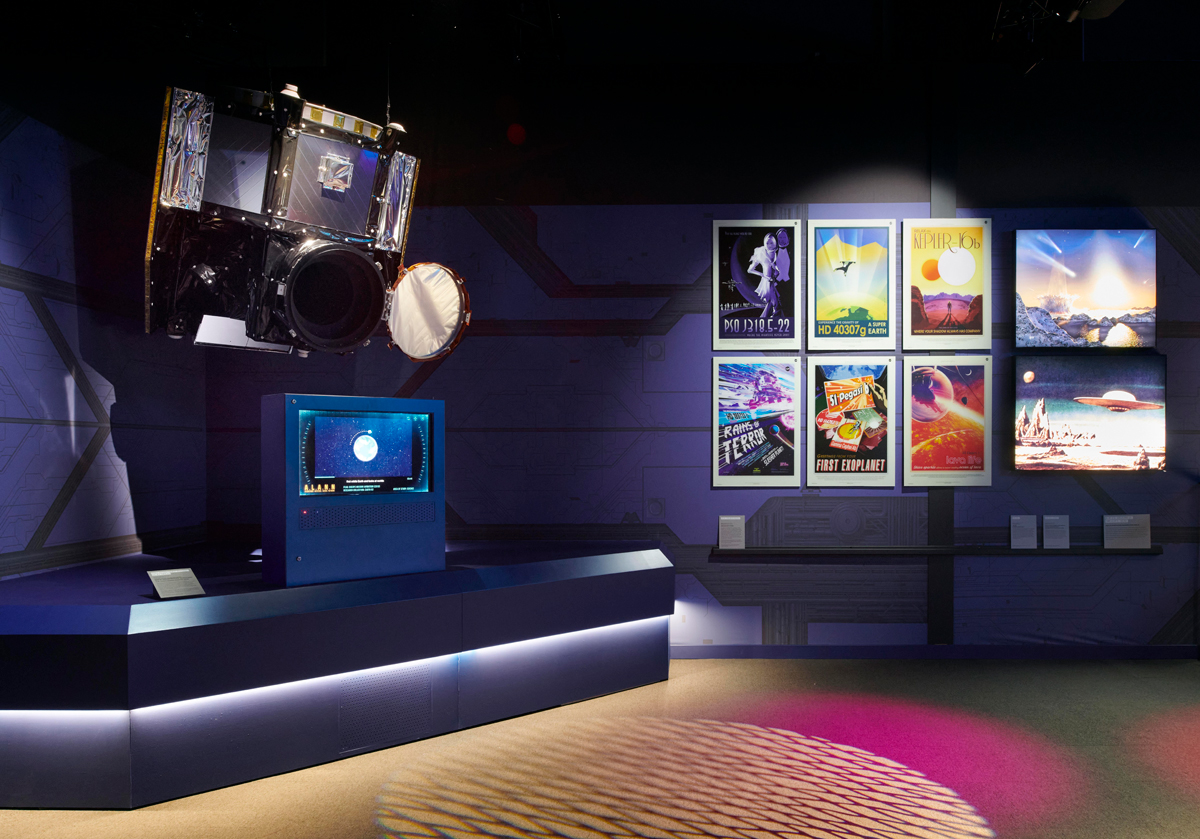
Science Fiction: Voyage to the Edge of Imagination, installation view. Courtesy Science Museum Group. Pictured: exploration deck featuring the deck model space telescope satellite CHEOPS and NASA artworks.
Science Fiction: Voyage to the Edge of Imagination, curated by Glyn Morgan and the Science Museum Group, the Science Museum, Exhibition Road, South Kensington, London, United Kingdom, through May 4, 2023
• • •
Science Fiction: Voyage to the Edge of Imagination, at London’s Science Museum, gathers models of rockets and space vessels, costumes, film posters and clips, and spreads of illustrations from books, magazines, and comics alongside historical photos and items from research labs and various NASA projects, including the Apollo missions. Unsurprisingly, it leans hard on aliens and star travel, though older museumgoers (including parents) may eye-roll at yet another meeting with the usual spacecraft, the usual monsters, the usual robots . . . Here’s Maria from Metropolis (1927), sexy and socially perilous; here’s Robby from Forbidden Planet (1956), a charmingly ungainly knowledge-engine with an edge of unknown threat. Depicting multicultural shipbound activity, here’s TV show Star Trek (1966–69)—a small model of the Enterprise, a photo of the late Nichelle Nichols as Lieutenant Uhura—as its crew seek out new life, new planetscapes, new dilemmas. And here’s Alien (1979), unleashing the sleekly deadly Xenomorph, suddenly onboard and among us. Some are scarier than others, for sure, but these are old friends. Who knows, maybe a familiar presence helps keep our spirits up as we poke around more troubled areas?
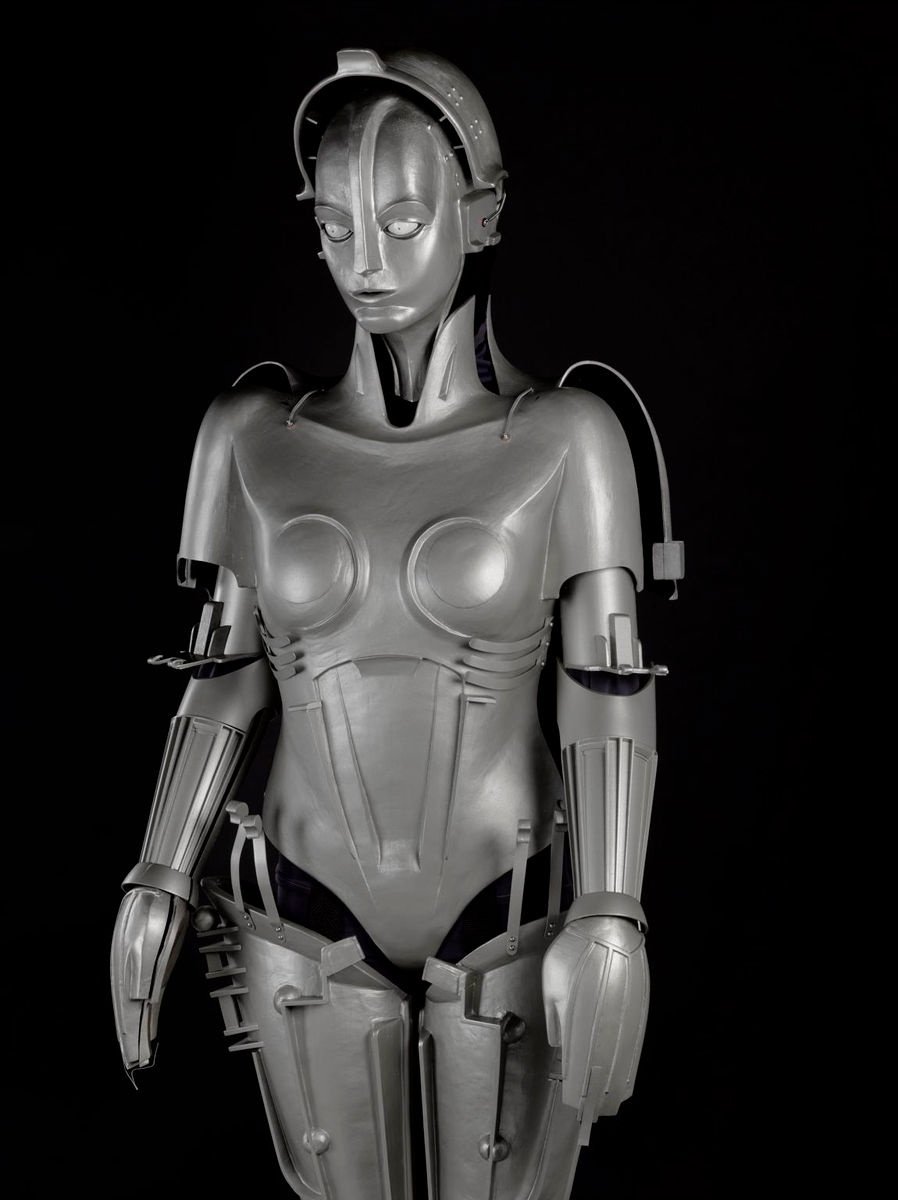
Replica of Machinenmensch (Maria) robot, designed and made for Fritz Lang’s film Metropolis, 1927. Built by prop-makers Kropserkel. Courtesy Science Museum Group.
Linking science in the practical world with the science in our fantastical heads, the show moves from machine-based problem-solving (such as reaching the moon or achieving light speed) toward riddles of other kinds. Who else is out there, and where, and what happens when we meet? How will we navigate cultural clashes? Is technology changing us as humans? Isn’t a robot just a kind of slave? Is intelligence merely computer code? Could a planet have a soul? And what if (that tireless narrative twist) we humans ourselves are the monsters!?
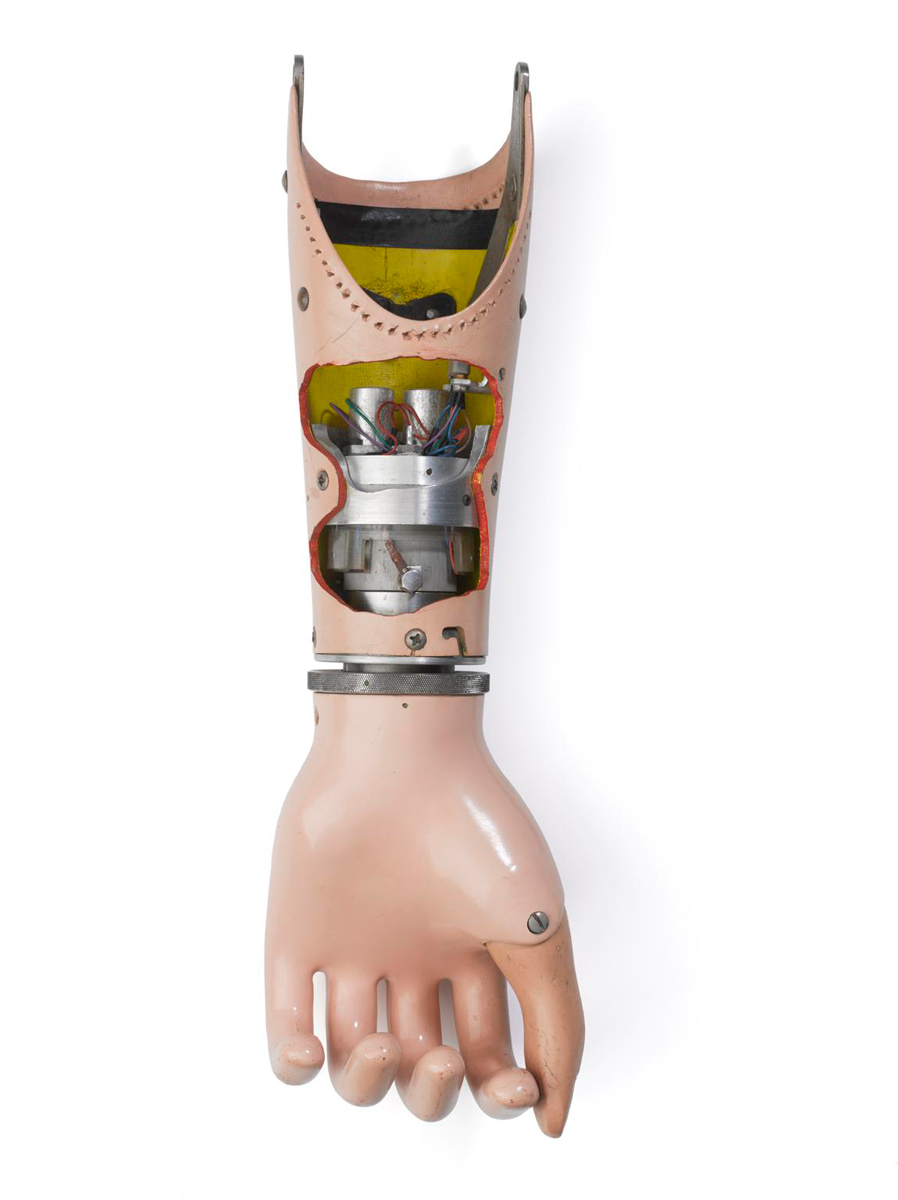
Artificial hand prosthetic device powered by carbon dioxide, employing two miniature rolling sleeve valves. Complete lower arm with wrist rotator. Courtesy Science Museum Group.
The problem-solving devices include telescopes and pacemakers, prosthetic limbs and gene-splicing kits. As for the riddles, the exhibition too often relies on a single, recently recognized strand within SF. The catchall term for this strand is Afrofuturism, and its presence is the more welcome for being somewhat unexpected. But given the explicatory weight it bears, we get less of its scrappy internal intricacy than we need, which is a shortfall worth examining.
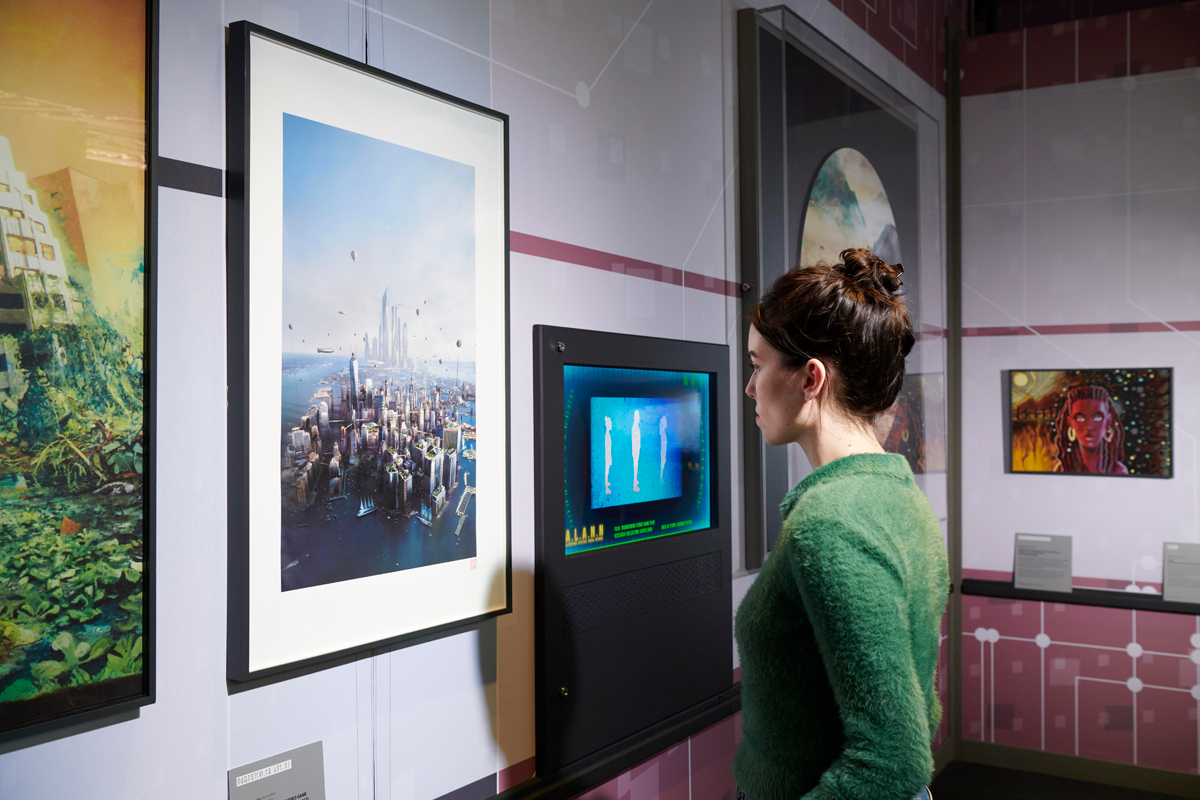
Science Fiction: Voyage to the Edge of Imagination, installation view. Courtesy Science Museum Group.
On the plus side, we encounter Kenyan director Wanuri Kahiu’s short 2009 film Pumzi, a glittering fragment about the future politics of drought. Self-taught Congolese artist Monsengo Shula paints vivacious street mural–style pictures of cyborg-entangled Kinshasa life. From British Ghanaian artist Larry Achiampong we get a space flag in red, gold, and green, plus the spacesuit left behind by a visitor maybe planning to colonize Earth.
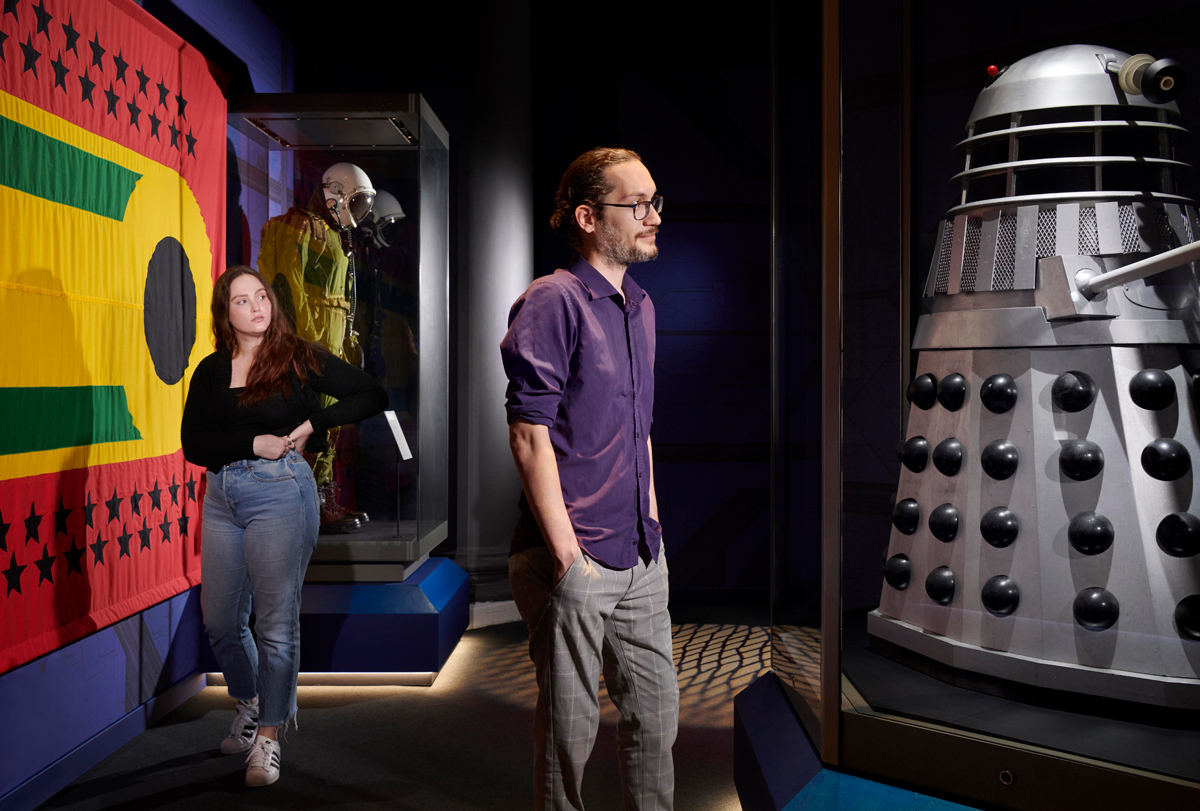
Science Fiction: Voyage to the Edge of Imagination, installation view. Courtesy Science Museum Group. Pictured, left wall: Larry Achiampong, objects from Relic Traveller, 2020–.
Was our own space race merely an imperialist venture? What if alien explorers were to flip the narrative and ally themselves with those regions sneered at (on Earth) as “less developed”? As a genre, Afrofuturism’s approach often tends toward dryly sardonic cultural collage working against the grain of SF’s classic drives; it’s a very beguiling approach. But the use of it here masks how varied the ideas within this tag can be. The late bandleader Sun Ra, self-declared scientist-adventurer-prophet and the pioneer of this outlook, figures prominently in the catalog, while present-day singer-star Janelle Monáe is represented in the museum by two album covers. Ra’s love of rocket ships signaled a mordant pessimism about life on this planet in his own time. With far bigger budgets, Monáe is a superbly energetic performer cosplaying the future soul-rebel robot in a multi-costumed fusion of styles—an ambivalent study more of the current entertainment industry than historical crimes and cruelties. Ra’s and Monáe’s robes and golden helmets signify subtly divergent attitudes, but you have to be very clued-in for this to register. Useful as the show’s cornucopia of possibilities is as a basic guide, especially if you study the catalog, it doesn’t always indicate how divergence becomes a deeper conversation.
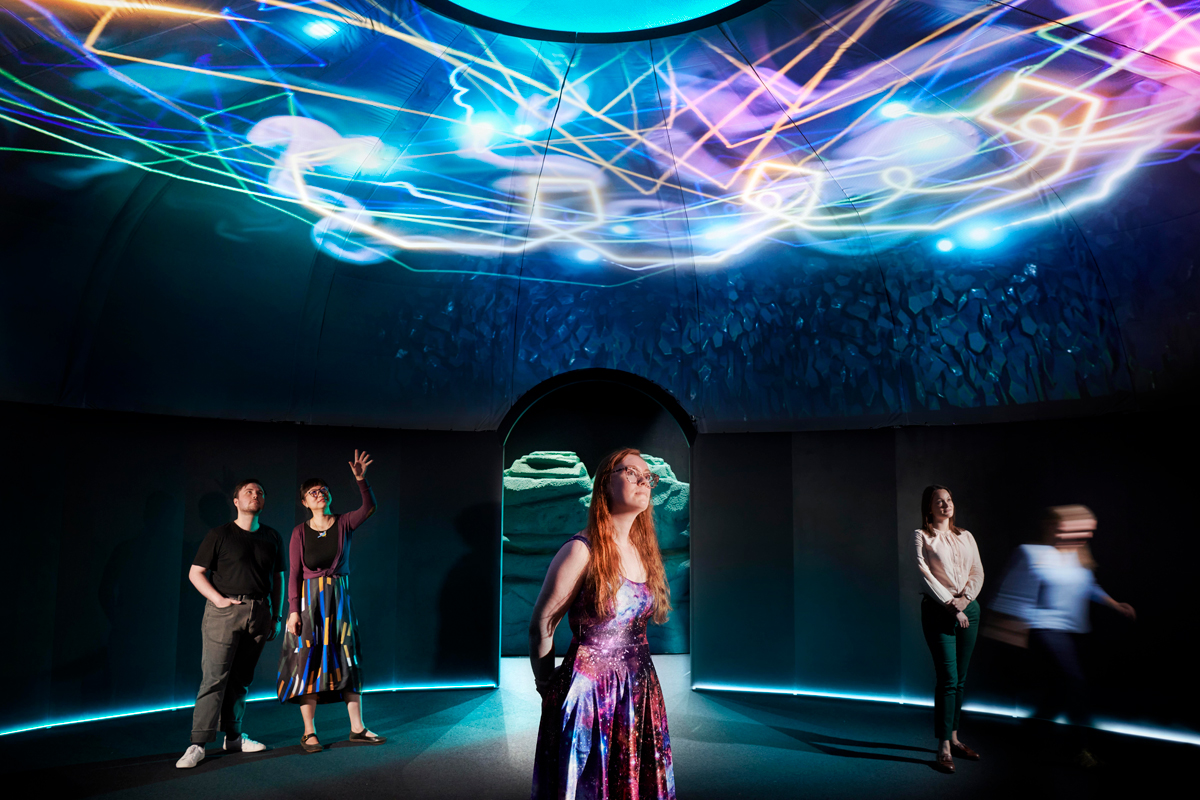
Science Fiction: Voyage to the Edge of Imagination, installation view. Courtesy Science Museum Group. Pictured: a swarm of bioluminescent creatures emerging overhead inside the “Off-World” section.
Most science fiction is committed to show as well as tell. And here’s the show: a book or record cover or film trailer ignites your curiosity with fabulous upfront surfaces, or the bright strangeness of the backdrops, or something funny or weird or frightening. Metals gleam and starlight flares against the velvet dark of space. Within cities that are high-color trash-piles of plastics or daunting arrays of geometry, we meet flights of pink wriggling brains or looming slavering maws. Meanwhile, civilizations settle into greenish deeps of water or revert back to jungle, or else live on only as vast burnt-out craters . . . All of which a modern museum can easily handle in its displays.
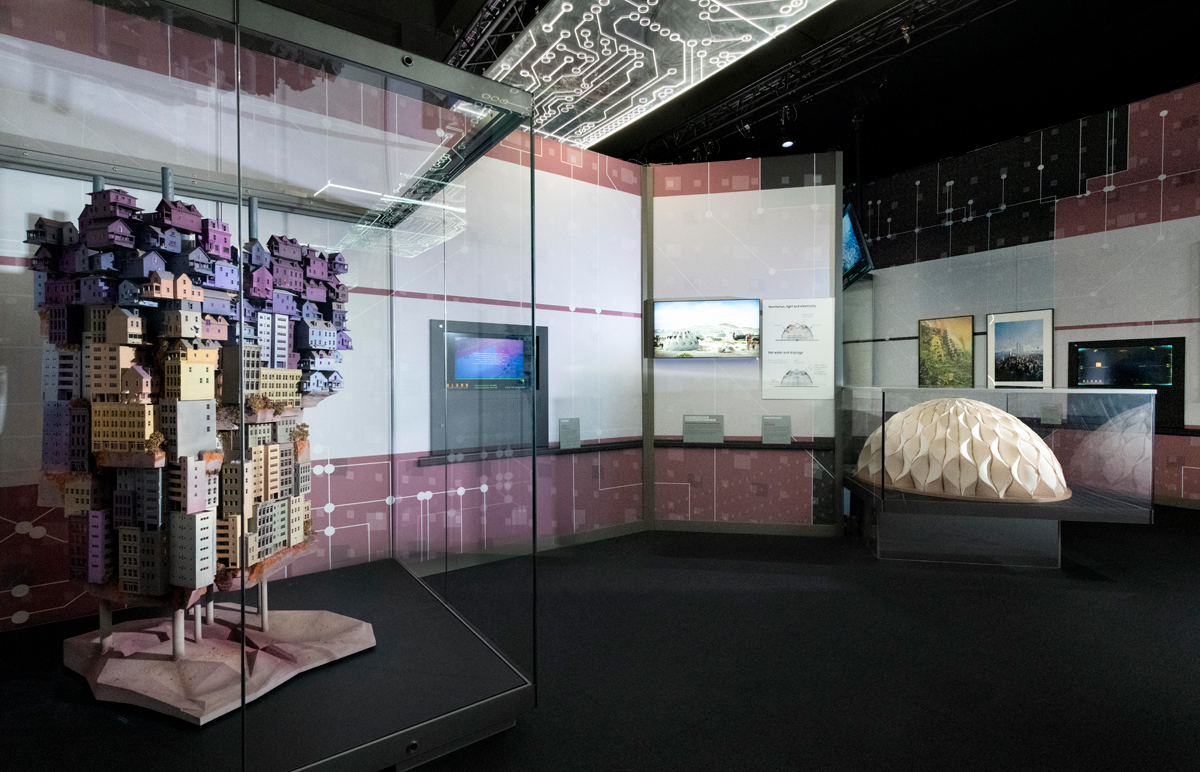
Science Fiction: Voyage to the Edge of Imagination, installation view. Courtesy Science Museum Group.
But what about the tell? The design of this exhibition places us aboard an imagined space shuttle, complete with portals and metallic corridors. Video monitors elaborate the conceit: a ship’s computer is given friendly human form as a talking head, and where the science demands more explanation there are further videos. Visitors can choose to dawdle and watch and listen. But to be honest, not many do. Even the interactive alien chill-out room is uninvolving and almost empty.
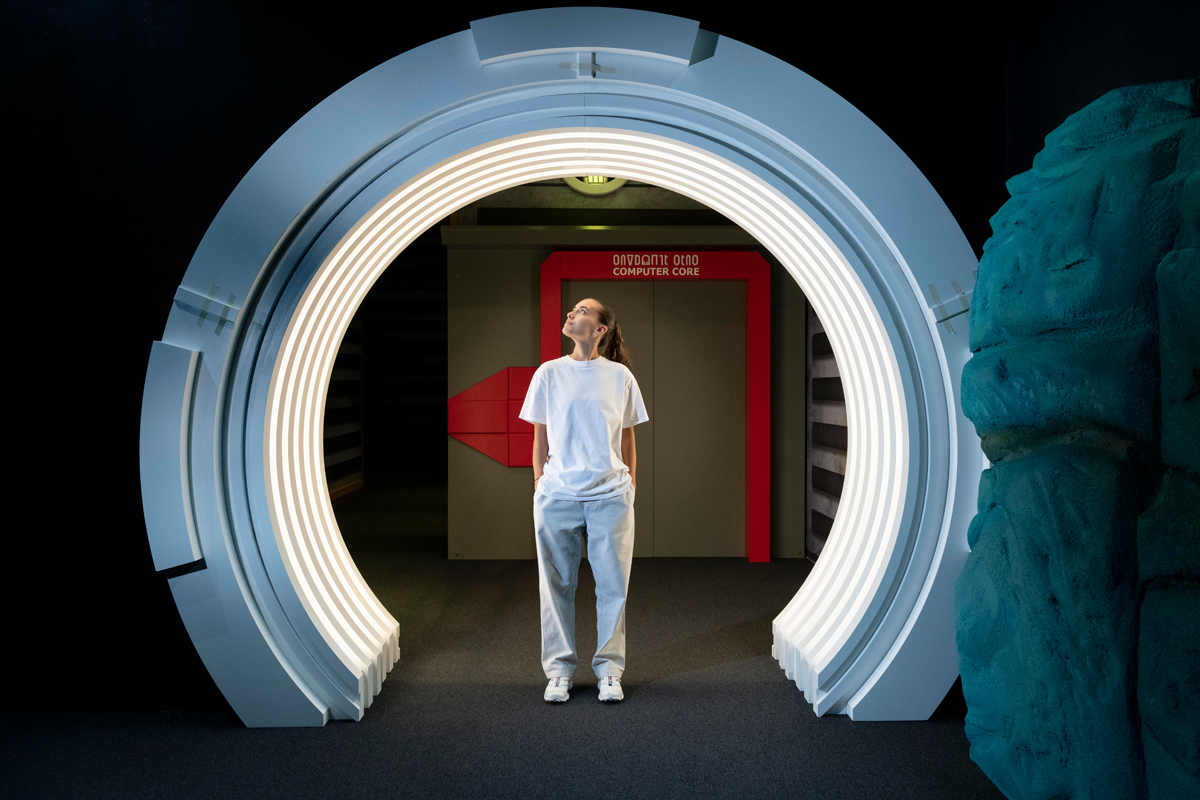
Science Fiction: Voyage to the Edge of Imagination, installation view. Courtesy Science Museum Group. Pictured: the wormhole jump gate.
Perhaps it was just me, but I sensed the curators silently fretting here. As if ordinary curiosity, like clean water or fuel, is everywhere running out; as if museumgoers are all as distractable as some children, daunted by science in its full complexity. Hence key details (for example about the hidden social bias of algorithms) are explored only in the far reaches of the videos, while more controversial claims (for example about the cyborg nature of gender) are left for the catalog.
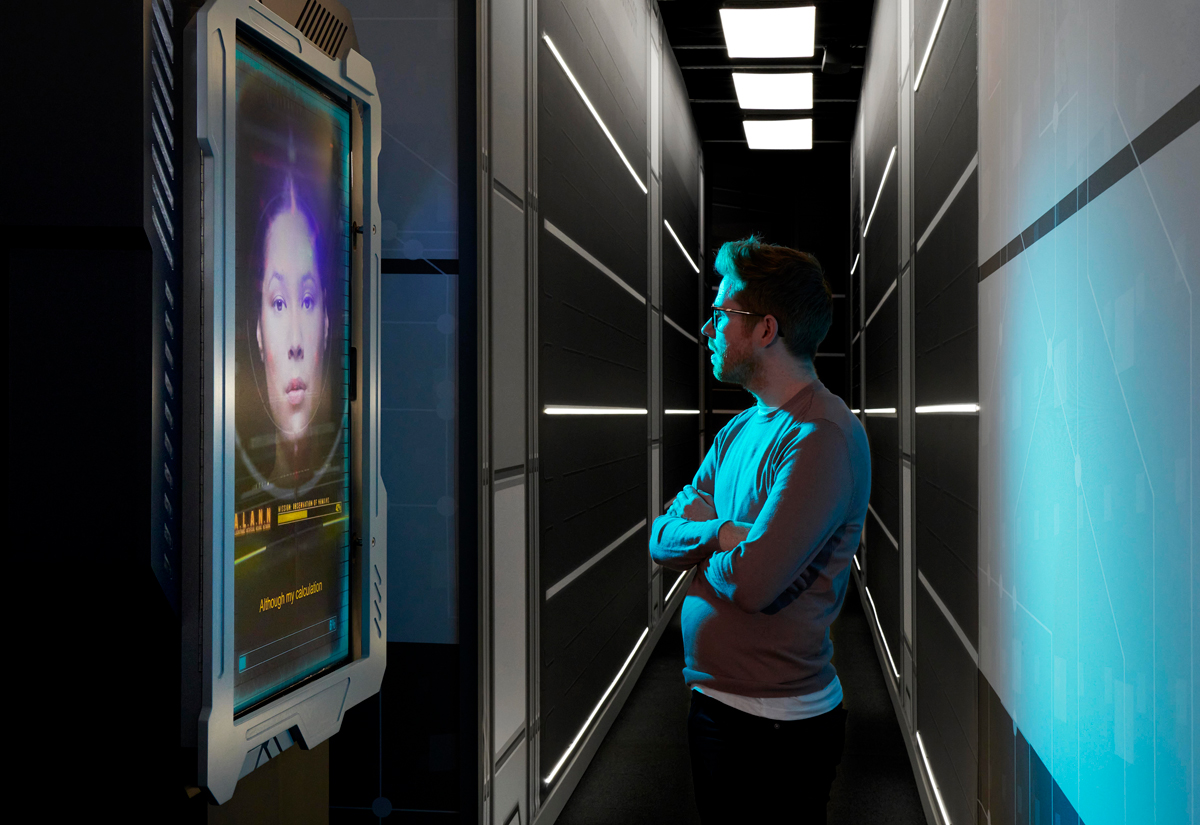
Science Fiction: Voyage to the Edge of Imagination, installation view. Courtesy Science Museum Group. Pictured, left: the AI guide.
This structural decision is pedagogic requirement treated as looming cultural limit, and it’s a pity. Yes, routine schoolteacherly presentation is often tiresome. But the detail of authentic science can also be its own intoxicating rhetoric: anti-intuitive facts as special effects, algebra as off-world chatter. Science fiction can even be the model here. Precisely because some SF feels free not to be educational at all, to manifest as thrill-power—childish, escapist, and the rest—tell can be fused with show. Subtler arguments can be slipped into the speculative intensification and woven through its stories, masked as machine-tooled metaphors of scale, immersion, jump-cut confrontation with the labyrinthine mind or the chaotic beast.
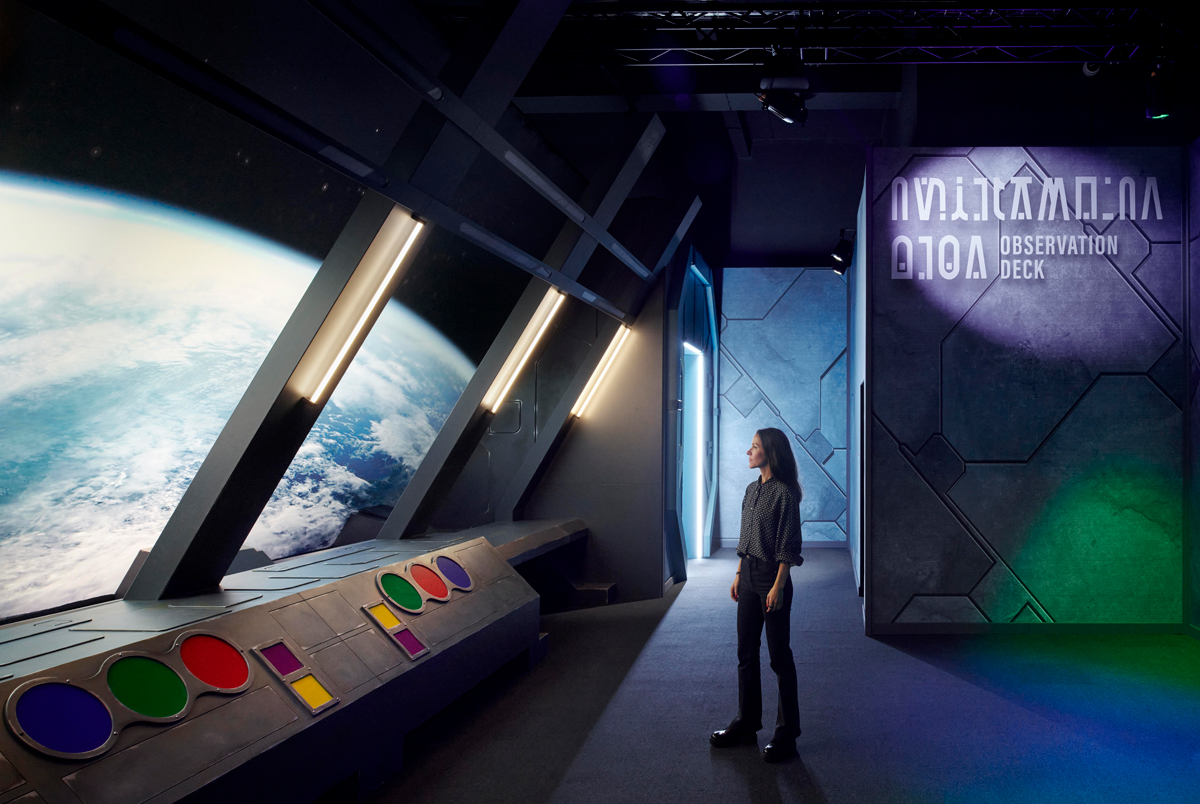
Science Fiction: Voyage to the Edge of Imagination, installation view. Courtesy Science Museum Group. Pictured: the observation deck.
And sometimes the limit—the contradiction even—can be a story’s hook. This past October (and too late for inclusion), ninety-year-old former Star Trek lead William Shatner himself flew into near-space at last. The lifelong ambassador for the pulp dramas of encounter returned not vindicated but distressed: “I discovered that the beauty isn’t out there, it’s down here, with all of us. Leaving that behind made my connection to our tiny planet even more profound. It was among the strongest feelings of grief I have ever encountered.”
Of course, there’s a warning here—Shatner finding real-life space more grim than magical. But, like many dangers, it’s also strangely attractive. With its clutter and its fretting, the show muffles exactly this contradictory poetry.
Mark Sinker has written about music, film, and the arts since the 1980s, at outlets including Sight and Sound, Crafts magazine, the Face, the Village Voice, and the London Review of Books. In the early 1990s he was editor of the Wire, and in 2019 published an anthology of essays and conversations about UK music-writing, A Hidden Landscape Once a Week: The Unruly Curiosity of the UK Music Press in the 1960s–80s, in the words of those who were there.